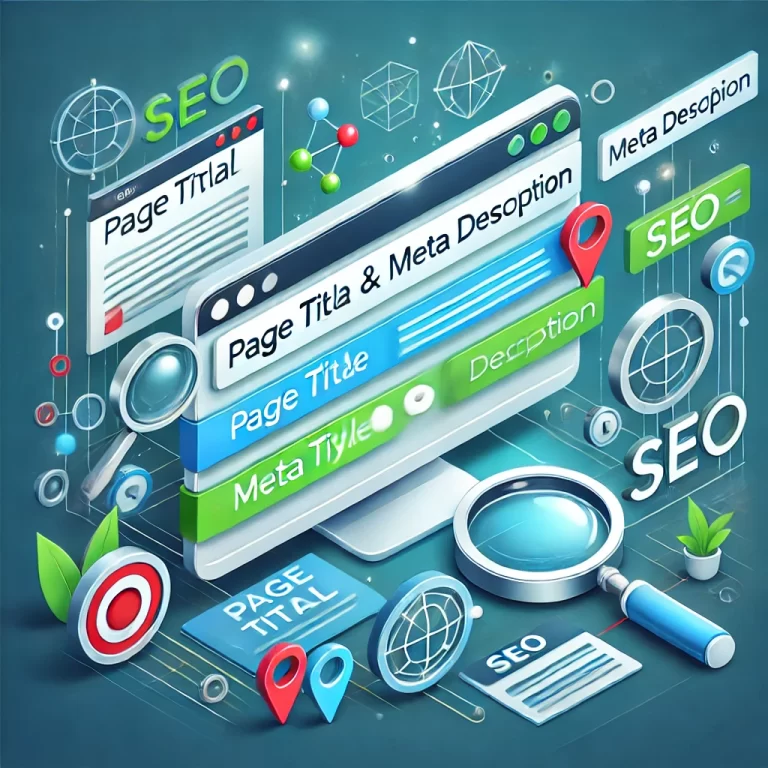How to Improve Page Speed: A Comprehensive Guide

Improve page speed is a critical factor in the performance of any website. It has a big impact on search engine rankings in addition to user experience. A fast-loading website ensures visitors stay longer, reduces bounce rates, and improves conversions. This guide will provide a detailed and actionable approach to improving page speed, ensuring your site performs at its best.
What Is Page Speed and Why Does It Matter?
The time it takes for a webpage to load completely is called page speed. It’s measured in several ways, including:
-
- Time to First Byte (TTFB): The duration required for a browser to obtain the initial bit of information from the server.
-
- Fully Loaded Time: The duration for all page elements, including scripts and images, to load completely.
-
- Largest Contentful Paint (LCP): The time taken to render the largest visible content, such as an image or heading, on the screen.
Page speed impacts:
-
- User Experience: Visitors expect fast-loading pages; most abandon sites that take more than 3 seconds to load.
-
- Search Rankings: Google considers page speed a ranking factor in its Core Web Vitals metrics.
-
- Conversions and Revenue: Faster pages lead to higher conversion rates, especially for e-commerce sites.
Factors That Affect Page Speed
-
- Large Images: Unoptimized images are among the biggest culprits for slow-loading websites.
-
- Excessive HTTP Requests: Multiple requests to load CSS, JavaScript, and other resources increase load time.
-
- Server Response Time: A slow server takes longer to deliver resources to browsers.
-
- Unoptimized Code: Bloated CSS, HTML, and JavaScript can slow down rendering.
-
- Lack of Browser Caching: If browsers don’t store elements locally, they must reload them every time a user visits.
-
- No Content Delivery Network (CDN): Without a CDN, content delivery can be slow, especially for global users.
-
- Third-Party Scripts: External scripts like ads, analytics, or social media widgets can add to loading times.
How to Measure Page Speed
Before improving page speed, it’s essential to analyze current performance. Use these tools:
-
- Google PageSpeed Insights: Provides an overall score and actionable recommendations for improvement.
-
- GTmetrix: Offers detailed metrics, including load times, page size, and the number of requests.
-
- WebPageTest: An advanced tool for in-depth testing and waterfall analysis.
-
- Pingdom Website Speed Test: Simple to use and ideal for identifying slow-loading elements.
Step-by-Step Guide to Improving Page Speed
1. Optimize Images
On a webpage, images are frequently the most substantial parts. To optimize them:
-
- Compress Images: Use tools like TinyPNG, ImageOptim, or ShortPixel to reduce image file size without losing quality.
-
- Use the Right Format: Switch to modern formats like WebP, which are smaller than JPEG or PNG.
-
- Set Proper Dimensions: Scale images to fit their display dimensions rather than relying on CSS to resize them.
-
- Lazy Loading: Load images only when they appear in the user’s viewport using the loading=”lazy” attribute.
2. Minimize HTTP Requests
Reducing the number of elements loaded on a page decreases HTTP requests.
-
- Combine CSS and JavaScript Files: To minimize requests, combine several files into a single file.
-
- Use CSS Sprites: Organize several little images into a single sprite to reduce the number of image queries.
-
- Eliminate Unnecessary Resources: Remove unused CSS, JavaScript, or plugins that bloat the site.
3. Enable Browser Caching
Browser caching allows frequently accessed resources, like images or scripts, to be stored locally.
-
- Set an appropriate cache expiry for assets in your server settings.
-
- Use tools like W3 Total Cache (WordPress) to implement caching easily.
4. Leverage a Content Delivery Network (CDN)
A CDN distributes your site’s content across a network of servers worldwide, ensuring users access data from the nearest location.
-
- Popular CDNs include Cloudflare, Akamai, and Amazon CloudFront.
-
- A CDN reduces latency and ensures faster load times for global audiences.
5. Reduce Server Response Time
A faster server response time (under 200ms) improves page speed significantly.
-
- Use a reliable hosting provider with fast servers.
-
- Upgrade to dedicated or VPS hosting if shared hosting is slow.
-
- Optimize your database by removing unnecessary data and queries.
6. Minify and Compress Files
Minifying reduces the size of CSS, HTML, and JavaScript files by removing unnecessary spaces, comments, and characters.
-
- Use tools like UglifyJS, CSSNano, or HTMLMinifier for manual minification.
-
- Install plugins like Autoptimize for WordPress to automate this process.
-
- Enable Gzip compression on your server to compress files before sending them to browsers.
7. Use Asynchronous Loading for JavaScript
JavaScript can block rendering if it loads synchronously.
-
- Use the async attribute to load scripts without blocking page rendering.
-
- Defer non-critical JavaScript files until the rest of the page loads using the defer attribute.
8. Optimize Fonts
Custom fonts can slow down a site if not optimized.
-
- Use system fonts where possible to avoid additional downloads.
-
- Host fonts locally to reduce external requests.
-
- Use font-display: swap; to load text with fallback fonts before the custom font is ready.
9. Reduce Redirects
Redirects add extra HTTP requests, slowing down page load time.
-
- Minimize the use of 301 and 302 redirects.
-
- Update internal links to point directly to the destination page.
10. Monitor and Limit Third-Party Scripts
Third-party scripts, such as tracking codes or widgets, can slow down page speed.
-
- Only use essential scripts that add real value.
-
- Load scripts asynchronously to reduce their impact on performance.
-
- Regularly audit third-party integrations and remove unused ones.
Advanced Techniques for Page Speed Optimization
1. Implement Critical CSS
Load only the CSS required for the above-the-fold content first, and defer the rest. This improves the perceived load time.
2. Prefetch Resources
Use DNS prefetching or resource preloading to load critical resources before they’re needed.
3. HTTP/2 and QUIC Protocols
Upgrade your server to support HTTP/2 or QUIC, which allows for faster and more efficient loading of resources.
4. Use Progressive Web App (PWA) Features
PWAs cache assets locally, providing near-instant load times for repeat visitors.
How Page Speed Impacts SEO and Business
-
- Improved Rankings: Google uses page speed as a ranking signal, especially with the introduction of Core Web Vitals. Faster sites rank higher.
-
- Better User Engagement: Visitors are more likely to stay on and explore fast-loading websites.
-
- Higher Conversions: Speeding up your website can significantly improve sales, leads, and revenue.
Maintaining Page Speed Over Time
Improving page speed is an ongoing process. To maintain a fast-loading website:
-
- Regularly test page speed using the tools mentioned above.
-
- Monitor server performance and upgrade as needed.
-
- Update plugins, themes, and frameworks to their latest versions.
-
- Audit your site for unnecessary bloat every quarter.
Improving page speed is not just about technical optimization; it’s about delivering a seamless experience to your visitors. By implementing the tips and techniques in this guide, you’ll create a website that’s fast, user-friendly, and primed for search engine success.


